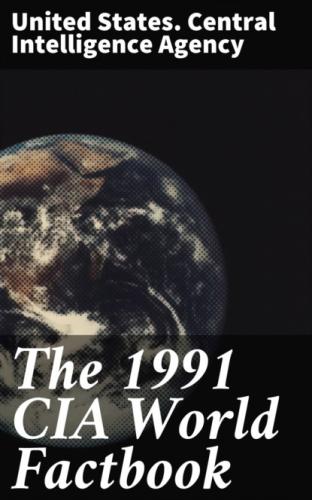US—includes Andorra within the Barcelona (Spain) Consular District and the US Consul General visits Andorra periodically; Consul General Ruth A. DAVIS; Consulate General at Via Layetana 33, Barcelona 3, Spain (mailing address APO NY 09286); telephone [34] (3) 319–9550
_#_Flag: three equal vertical bands of blue (hoist side), yellow, and red with the national coat of arms centered in the yellow band; the coat of arms features a quartered shield; similar to the flags of Chad and Romania which do not have a national coat of arms in the center lar to the
_*Economy #_Overview: The mainstay of Andorra's economy is tourism. An estimated 12 million tourists visit annually, attracted by Andorra's duty-free status and by its summer and winter resorts. Agricultural production is limited by a scarcity of arable land, and most food has to be imported. The principal livestock activity is sheep raising. Manufacturing consists mainly of cigarettes, cigars, and furniture. The rapid pace of European economic integration is a potential threat to Andorra's advantages from its duty-free status.
_#_GDP: $727 million, per capita $14,000; real growth rate NA% (1990 est.)
_#_Inflation rate (consumer prices): NA%
_#_Unemployment rate: none
_#_Budget: revenues $NA; expenditures $NA, including capital expenditures of $NA
_#_Exports: $0.017 million (f.o.b., 1986);
commodities—electricity;
partners—France, Spain
_#_Imports: $531 million (f.o.b., 1986);
commodities—consumer goods, food;
partners—France, Spain
_#_External debt: $NA
_#_Industrial production: growth rate NA%
_#_Electricity: 35,000 kW capacity; 140 million kWh produced, 2,800 kWh per capita (1989)
_#_Industries: tourism (particularly skiing), sheep, timber, tobacco, smuggling, banking
_#_Agriculture: sheep raising; small quantities of tobacco, rye, wheat, barley, oats, and some vegetables
_#_Economic aid: none
_#_Currency: French franc (plural—francs) and Spanish peseta (plural—pesetas); 1 French franc (F) = 100 centimes and 1 Spanish peseta (Pta) = 100 centimos
_#_Exchange rates: French francs (F) per US$1—5.1307 (January 1991), 5.4453 (1990), 6.3801 (1989), 5.9569 (1988), 6.0107 (1987), 6.9261 (1986), 8.9852 (1985); Spanish pesetas (Ptas) per US$1—95.20 (January 1991), 101.93 (1990), 118.38 (1989), 116.49 (1988), 123.48 (1987), 140.05 (1986), 170.04 (1985)
_#_Fiscal year: calendar year
_*Communications #_Highways: 96 km
_#_Telecommunications: international digital microwave network; international landline circuits to France and Spain; stations—1 AM, no FM, no TV; 17,700 telephones
_*Defense Forces #Note: defense is the responsibility of France and Spain % @Angola *Geography #_Total area: 1,246,700 km2; land area: 1,246,700 km2
_#_Comparative area: slightly less than twice the size of Texas
_#_Land boundaries: 5,198 km total; Congo 201 km, Namibia 1,376 km, Zaire 2,511 km, Zambia 1,110 km
_#_Coastline: 1,600 km
_#_Maritime claims:
Exclusive fishing zone: 200 nm;
Territorial sea: 20 nm
_#_Disputes: civil war since independence on 11 November 1975; on 31 May 1991 Angolan President Jose Eduardo dos SANTOS and Jonas SAVIMBI, leader of the National Union for the Total Independence of Angola (UNITA), signed a peace treaty that calls for multiparty elections between September and November 1992, an internationally monitored cease-fire, and termination of outside military assistance
_#_Climate: semiarid in south and along coast to Luanda; north has cool, dry season (May to October) and hot, rainy season (November to April)
_#_Terrain: narrow coastal plain rises abruptly to vast interior plateau
_#_Natural resources: petroleum, diamonds, iron ore, phosphates, copper, feldspar, gold, bauxite, uranium
_#_Land use: arable land 2%; permanent crops NEGL%; meadows and pastures 23%; forest and woodland 43%; other 32%
_#_Environment: locally heavy rainfall causes periodic flooding on plateau; desertification
_#_Note: Cabinda is separated from rest of country by Zaire
_*People #_Population: 8,668,281 (July 1991), growth rate 2.7% (1991)
_#_Birth rate: 47 births/1,000 population (1991)
_#_Death rate: 20 deaths/1,000 population (1991)
_#_Net migration rate: NEGL migrants/1,000 population (1991)
_#_Infant mortality rate: 151 deaths/1,000 live births (1991)
_#_Life expectancy at birth: 42 years male, 46 years female (1991)
_#_Total fertility rate: 6.7 children born/woman (1991)
_#_Nationality: noun—Angolan(s); adjective—Angolan
_#_Ethnic divisions: Ovimbundu 37%, Kimbundu 25%, Bakongo 13%, Mestico 2%, European 1%, other 22%
_#_Religion: indigenous beliefs 47%, Roman Catholic 38%, Protestant 15% (est.)
_#_Language: Portuguese (official); various Bantu dialects
_#_Literacy: 42% (male 56%, female 28%) age 15 and over can read and write (1990 est.)
_#_Labor force: 2,783,000 economically active; agriculture 85%, industry 15% (1985 est.)
_#_Organized labor: about 450,695 (1980)
_*Government #_Long-form name: People's Republic of Angola
_#_Type: in transition from a one-party Marxist state to a multiparty democracy with a strong presidential system
_#_Capital: Luanda
_#_Administrative divisions: 18 provinces (provincias, singular—provincia); Bengo, Benguela, Bie, Cabinda, Cuando Cubango, Cuanza Norte, Cuanza Sul, Cunene, Huambo, Huila, Luanda, Lunda Norte, Lunda Sul, Malanje, Moxico, Namibe, Uige, Zaire
_#_Independence: 11 November 1975 (from Portugal)
_#_Constitution: 11 November 1975; revised 7 January 1978, 11 August 1980, and 6 March 1991
_#_Legal system: based on Portuguese civil law system and customary law; recently modified to accommodate multipartyism and increased use of free markets
_#_National holiday: Independence Day, 11 November (1975)
_#_Executive branch: president, chairman of the Council of Ministers, Council of Ministers (cabinet)
_#_Legislative branch: unicameral People's Assembly (Assembleia do Povo)
_#_Judicial branch: Supreme Court (Tribunal da Relacao)
_#_Leaders:
Chief of State and Head of Government—President Jose Eduardo dos
SANTOS (since 21 September 1979)
_#_Political parties and leaders: only one party exists—the Popular Movement for the Liberation of Angola-Labor Party (MPLA), Jose Eduardo dos SANTOS—although others are expected to form as legalization of a multiparty system proceeds; National Union for the Total Independence of Angola (UNITA) lost to the MPLA and Cuban military support forces in the immediate postindependence struggle, but is to receive recognition as a legal party
_#_Suffrage: universal at age 18
_#_Elections: first nationwide, multiparty elections to be held between September and November 1992
_#_Member
